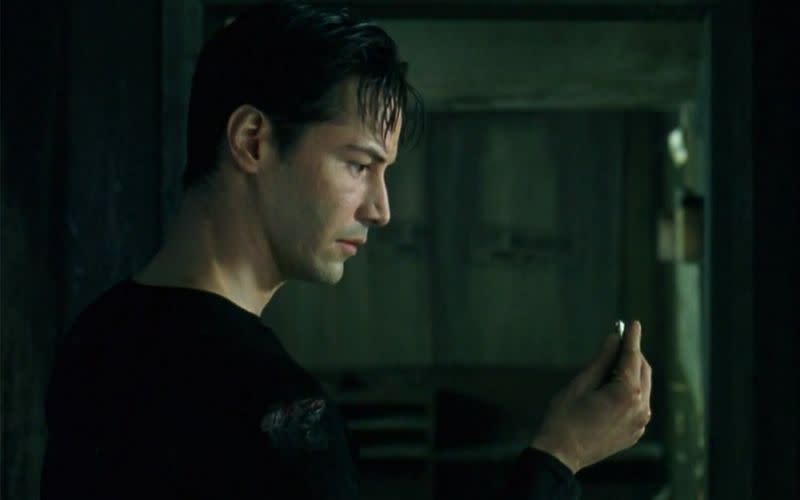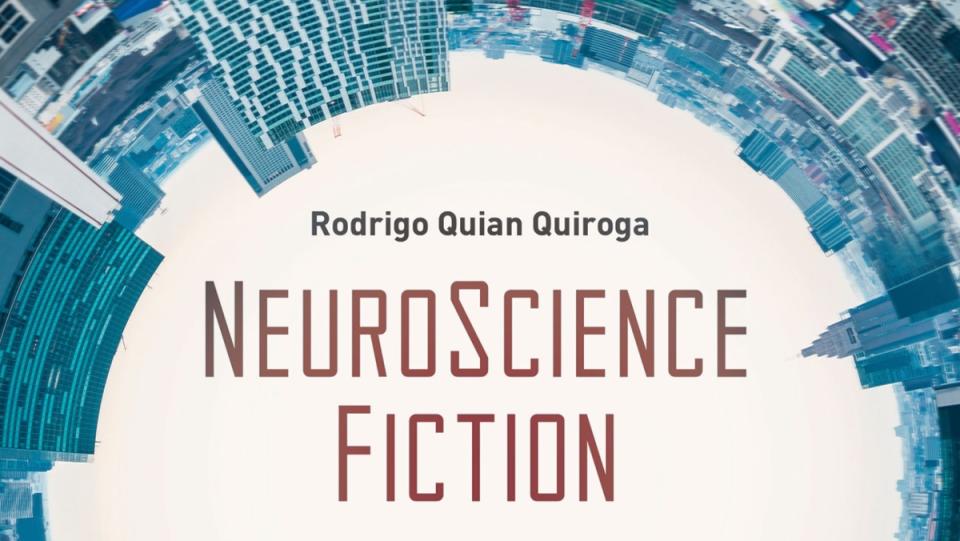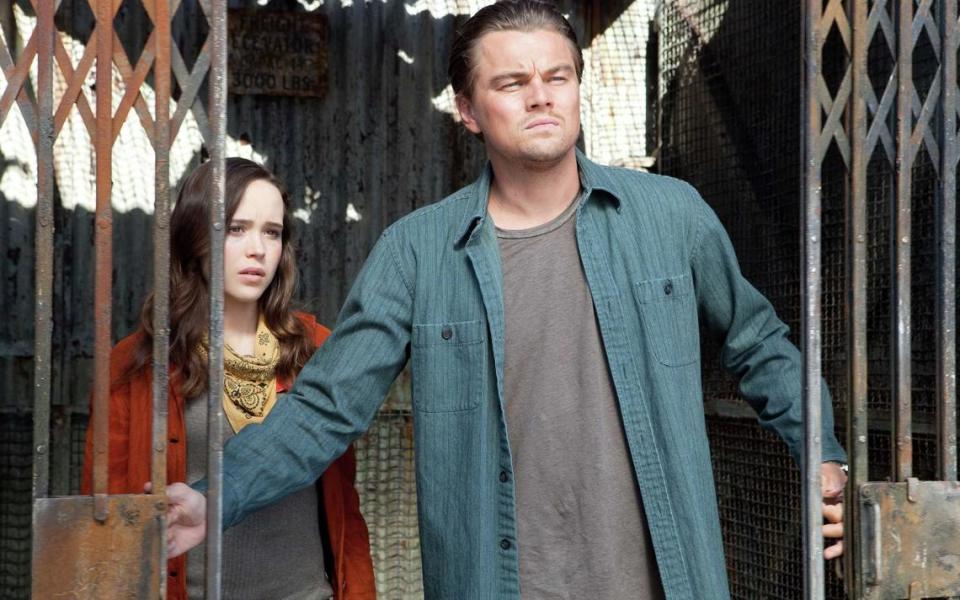NEUROSCIENCE FICTION Ties Classic Films to Scientific Studies
The connection between science fiction movies and real-life scientific studies is more cyclical than the average person would imagine. Films like Aliens and Oblivion tap into questions that humanity has pondered for thousands of years. Are we alone in this universe? How can we reach out to other life forms? Science fiction films create new questions and realities that scientists study in hopes of uncovering new, profound truths. Rodrigo Quian Quiroga’s book Neuroscience Fiction examines this relationship by analyzing major neuroscience concepts in classic films.
Its contents explore The Matrix’s illusion of reality, Inception’s dream construction, and Planet of the Apes‘ commentary on animal consciousness, among others. Readers get an extensive lesson these subjects and how philosophy ties into all facets of science—fictional, factual, and the fascinating studies happening right now.
Neuroscience and The Inception of A Book
“Neuroscience is basically trying to understand how the brain works,” Quiroga told Nerdist on a Skype interview. “If I am talking to you, how do I choose the words I am using? How do I process information that I want to tell you? How can I be standing? How can I be aware of myself?…There are so many processes that we take for granted. But, if you think about it, they are really fascinating. Seeing or remembering or being conscious of our own existence—they are all very intriguing processes. And what we neuroscientists try to do is understand how neurons somehow create these processes.”

Courtesy of University of Leicester, UK
The Argentine neuroscientist is a lifelong science fiction fan and current director at the Centre for Systems Neuroscience at the University of Leicester, UK. Quiroga decided to combine his love for science and film by choosing several of his favorite movies for a deeper investigation. The original idea stemmed from Stanley Kubrick’s 2001: A Space Odyssey, which comprises a chapter of Neuroscience Fiction.
“I chose these movies because they gave me an interesting angle to start what I think is a very deep discussion that is very [present] in neuroscience of the last few years. But it’s also rooted in very deep philosophical questions that we have been asking ourselves since the ancient Greeks…As a scientist, I think it would be very arrogant for me to ignore what Aristotle had to say about a problem I am studying. These guys didn’t have the technology we have nowadays to do the type or records or experiments we do. But they were thinking about these questions too.”
The Matrix, Magicians, & Evil Geniuses
One of Neuroscience Fiction’s more interesting chapters is about The Matrix and René Descartes’ “evil genius/demon” concept. The French philosopher wrote about the possibility of an evil and powerful genius who uses all his resources to deceive others about the external world. This is certainly the case in The Matrix, in which a faux reality by The Architect to distract humans from their reality as human batteries. They see the sky, trees, and buildings and taste food, but none of it is real.
Quiroga confirmed that experiments on triggering different sensations in the brain to promote different feelings and memories is real. “In neuroscience and 20th century philosophy, there is a discussion called brain in a vat,” Quiroga said. “Can you just electrically stimulate the brain and create different sensations? These are experiments that have been done. A famous neurosurgeon Wilder Penfield was electrically stimulating different areas of the brain and inducing feelings, memories, emotions, and sensations, and so on. He did it to map out the brain before he had to operate on it. If you read his book, it’s like reading a science fiction book.”

Warner Bros.
The Matrix features allegorical references to everything from trans identity to Christianity; it makes sense that some people think Neo is a Christ analogy: He is “the one” to liberate people. Neo is “born” into the real world, dies, and resurrects as a god-like figure. But Quiroga offered an alternative thought about Neo.
“I make a link between professional magicians and Neo in The Matrix,” he affirmed. “In the first Matrix, after Neo was trained and understands everything, he is suddenly facing these three agents and about to fight him. They shoot at him and he can see the matrix as it really is, which is basically composed of these funny Chinese characters that are blue and green and so on. So, he could see the root of the matrix. I think this is a nice analogy because the most important principle in neuroscience is that the process in brain are a construction.”
Quiroga continued, “Vision, memory, consciousness…these are all constructions by the brain. When we construct a story [in our mind], its based on very little information. The Chinese characters are like little bits of information and Neo can see that construction. Magicians are like Neo because they aren’t scientists but they are aware of how the brain works and creates things. That’s the basis of their tricks. Neo can alter things too, like magic.”
The Nolan-verse

BenBella Books
In Neuroscience Fiction, Quiroga makes several connections between The Matrix and Christopher Nolan’s Inception. He muses about how The Matrix challenges the existence of reality while Inception wonders if we can create an alternate reality in someone’s mind. The chapter dives into the murky lines between being asleep or awake and conscious of what’s going on around us. Quiroga takes readers deep in into the studies of Sigmund Freud and Carl Jung, two leaders in dream studies.
He introduces science studies like dream incubation (the attempt to study our dreams), lucid dreams (where we realize we aren’t awake), and research done by a Kyoto University team to show it’s possible to predict or decode a person’s dreams. There have also been studies to see if brain-to-brain communication is possible.
The Inception section also draws a connection between the film and Jorge Luis Borges’ The Circular Ruins. The 1940 short story describes a character who constructs a person in his dream. He faces the same massive tasks seen by Inception’s architects like building minute details for the person’s physical makeup. In the end, the character realizes he is actually a part of someone else’s dream. Quiroga is quite familiar with his fellow Argentine’s work, calling him a master of dreams.

Warner Bros.
“When I investigated a bit about the roots of how Christopher Nolan came up with the idea of Inception and writing the script, I found out that Nolan is a very big fan of Borges,” Quiroga said. “[Nolan] is a guy that I would really love to have a beer with and talk about science fiction. Memento is the best characterization of a patient we know in neuroscience called HM. And it’s amazing. I can actually show that movie in a neuroscience course to my students to start a conversation.”
Like everyone else, Quiroga is ready to see how Nolan’s upcoming film Tenet will unfold. It could possibly explore, or even introduce, new thoughts about the flow of time to inspire future studies. In the meantime, Quiroga hopes the book will fascinate those who love movies and the connection between fiction and reality. “I think the topics are really fascinating,” he said. “It’s perhaps some of the most fascinating stories I could tell to anybody…it’s about the fascination that I see in neuroscientists and how what I am doing in the lab relates to my favorite science fiction movies and philosophy, of course.”
Neuroscience Fiction will surely make readers think twice about their minds, technology, and how philosophy, science, and entertainment are all vital parts of understanding humanity.
Featured Image: BenBella Books
The post NEUROSCIENCE FICTION Ties Classic Films to Scientific Studies appeared first on Nerdist.